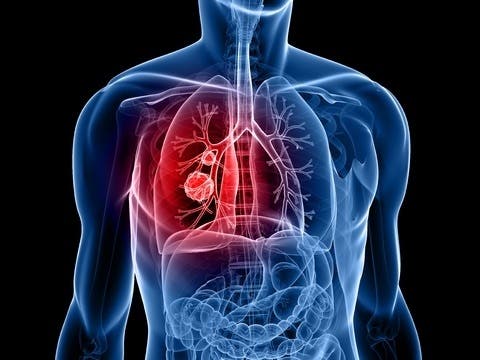Researchers at the National Research Foundation of Korea report on Sunday that they have identified a new microRNA molecule that suppresses a gene, which previous research had identified as playing a crucial role in lung cancer development. If the present findings are refined, it may be possible to diagnose lung cancer in the future based on this genetic marker.
MicroRNAs constitute a recently discovered class of non-coding RNAs that play key roles in the regulation of gene expression. Acting at the post-transcriptional level, these fascinating molecules may fine-tune the expression of as much as 30% of all mammalian protein-encoding genes. Their aberrant expression may be involved in human diseases, including cancer, as shown by previous research that found aberrant microRNA is linked to leukemia or breast cancer.
The Korean researchers identified one such small chain of RNA, called miR-9500, which forms a stem-loop structure and becomes expressed in lower levels in cancer tissue, compared to normal tissue. They also found that miR-9500 directly suppressed Akt1, which is assumed to be its target gene, as demonstrated via western blot, but did not affect the corresponding mRNA levels. Akt1 plays an important role in the production and proliferation of lung cancer genes, the study found.
To prove their point, Korean scientists infected a mouse with lung cancer and gave it miR-9500 injections over the next six weeks. They found that the rate of metastasis of a tumor in a mouse that had been injected with miR-9500 was significantly lower than that of a tumor growing in a normal mouse.
This sort of investigations will be extremely interesting to follow in the future, especially if a team can come up with a way of viably diagnosing human lung cancer based on miR-9500 expression levels. Already, the research may have some flaws, however. For one, the initial flank tumor proliferation experiment may be irrelevant, since the flank isn’t the native environment for human cancer cells. Secondly, the researchers performed direct injections into the tumor site with their miR, which kind of defeats the purpose of the experiment – you want to see if the molecule lives long enough in the blood stream until it reaches the target tumor. Then, tumor size sample data wasn’t particularly significant to become extremely valid from a statistical standpoint.
Either way, follow-up studies will be much welcome. The findings were reported in the journal Cell Death and Differentiation.










